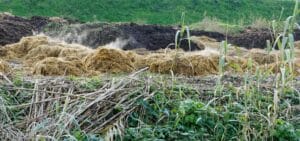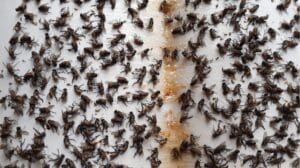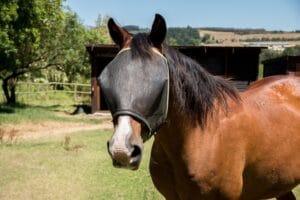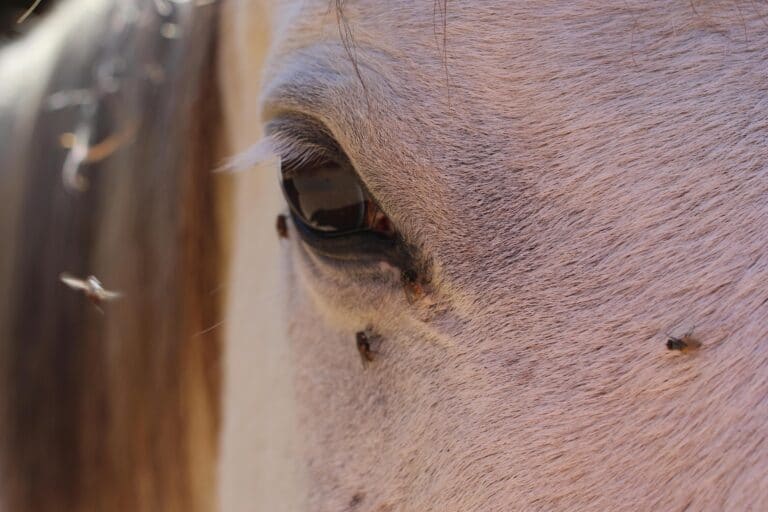Flies and other biting insects can be a very frustrating aspect of spending a summer at the stable. As we know all too well, flies can drive us mad, and horses are not immune to the nuisance. Not only do they pose a major inconvenience, flies and mosquitoes can carry a variety of diseases, which can also be a threat to horses. While they thrive in hot and humid environments, the key element in managing fly control at your stable this summer is prevention.
Implementing a proactive strategy will make it easier to manage flies and insects before they become a problem, as opposed to fighting an already established and abundant population.
We have gathered 5 key tips below to help you minimise insects at your stable and keeping horses happy and comfortable.
1. Having a Good Manure Management System in Place:
An effective manure management system will reduce the opportunity for flies and insects to reproduce, as manure and decaying organic material are very often used as a breeding ground. Strategically placing your manure and organic piles further away from the stable and other high traffic areas will help keep flies away. Make sure to keep your stable clean and remove droppings regularly, while dumping manure in a separate, designated area for storage or compost.

2. Improving Air Circulation in Your Stable:
Flies and insects dislike windy conditions, therefore creating cross breezes between doors and windows will make it harder for them to move around the stable. Stable fans, including ceiling and portable fans, are also useful in improving air circulation. Make sure the latter has an enclosed motor and is designed for agricultural use to minimize fire hazards.
3. Interrupting the Fly Life Cycle: Fly Predators and Insect Growth Regulators
A specific type of wasp commonly referred to as “Fly Predators” can be used to target flies at an early stage in their life cycle. These bugs are harmless to humans and horses and will specifically target flies at the larval stage, preventing them from reaching adult size and later reproducing. Fly Predators should be scattered around areas where flies usually breed in order to prevent the next generation from hatching. This biological fly control solution is a good alternative to chemical pesticides, which have often been found to be toxic to humans.
Similarly, Insect Growth Regulators (a.k.a feed-through-fly-control products) will also target flies in the larval stage but uses a slightly different mechanism. These products are given directly to horses by adding them to their feed. While harmless to horses, the substance ends up in manure and will act as a fly growth regulator by preventing fly eggs from hatching. In both methods, it is important to note that the fly population may not decrease right away. The normal life span of an adult fly being about 4 weeks, the adult fly population will remain untouched, and the effect will only be seen in the ‘new’ generation. For best results, it is recommended to adopt this method early in the fly season.
4. Installing Fly Traps:
Inside your stable, you may use fly traps that will lure flies away from the stalls. A simple fly tape placed above the stalls or near high traffic areas can help catch adult flies and prevent them from breeding.

5. Using Sprays and Other Physical Barriers:
Adding to the above strategies, it can also be helpful to spray fly repellent on horses individually. Consider using a fly spray or a topical product to keep your horse comfortable before a lesson or a hack out. Make sure to buy a product for equine use specifically and check with your vet in case of any doubt. To make your horse more comfortable when out in the field, you may also wish to use a fly mask to protect the head, as well as a lightweight fly sheet to use as a physical barrier.
Note that while these methods may not completely remove all flies and insects from your stable, they will help reduce the population of flies at various stages in their life cycles. It is recommended to use a combination of different methods to have the best result and make a significant difference. Keep in mind that this is not a one-off solution, but instead, an ongoing process which requires regular maintenance to continue keeping the flies at bay as much as possible.




